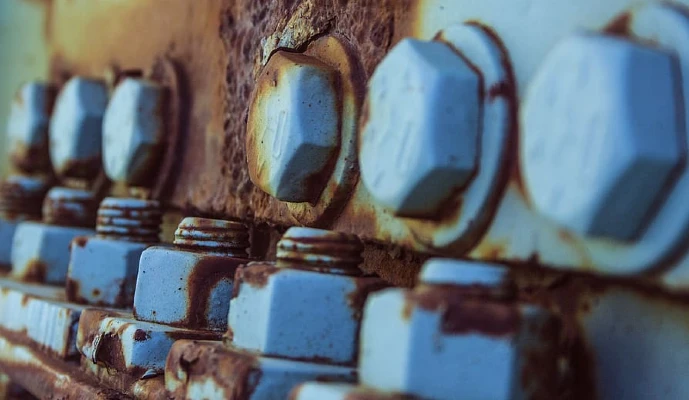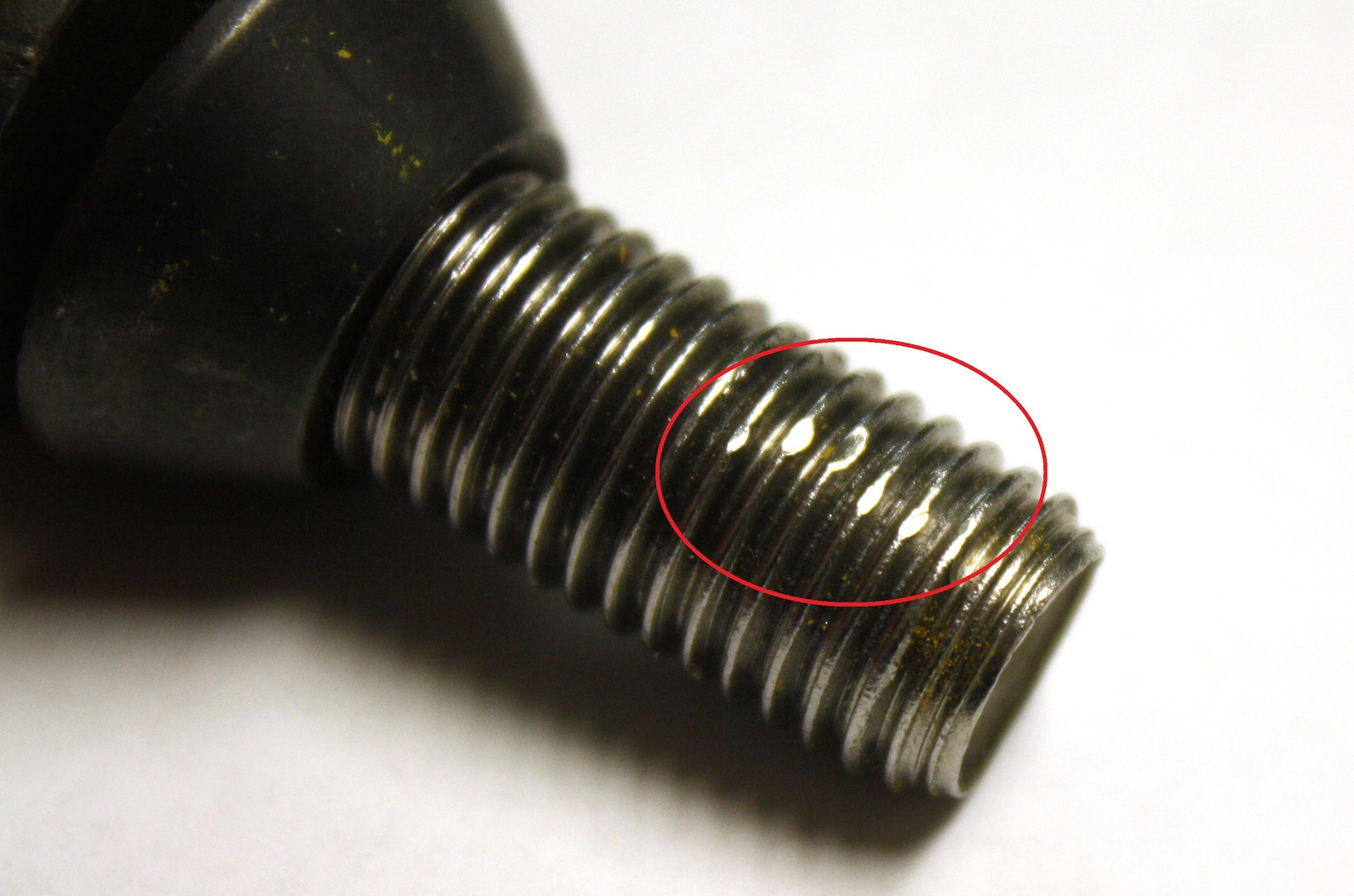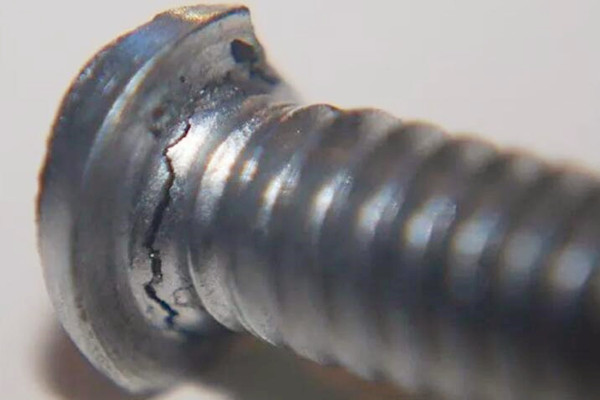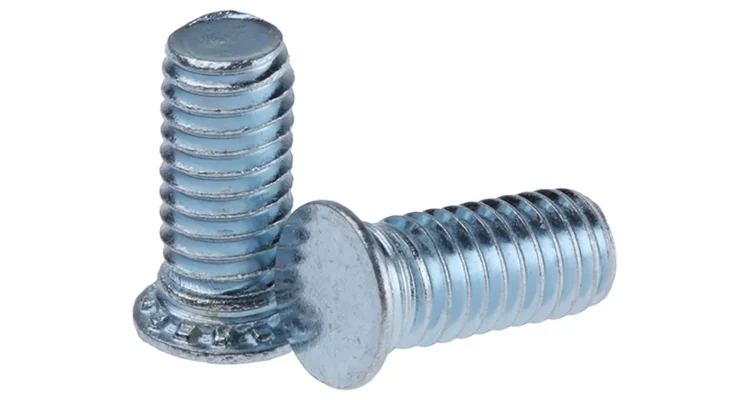
How To Identify And Resolve Bolt Material Defects
To identify and resolve bolt material defects, first understand their effects, which can lead to structural failures and accidents. There are various types of defects, such as surface, internal, and corrosion-related issues. Identifying defects involves visual inspections and non-destructive testing methods. Resolving them includes repairing or replacing the bolts, proper handling, and preventive maintenance strategies.
Effects Of Bolt Material Defects
More than an inconvenience, bolt material issues can result in structural and mechanical failures that compromise the safety of components. This knowledge is essential to avoid failures and achieve predictable performance.
Breach of Structural Integrity
Material defects in the form of pores, holes or other forms are preventing them from carrying loads. Surface cracks a prime example: They… Integrity compromised structural fabrications can lead to catastrophic collapses in examples of construction, machinery and bridges.
Increased Risk of Accidents
Busted bolts, some of the most causes behind mechanical failures that would lead to accidents. In aviation, missing or defective bolt can result in landing gear failure like the 2001 incident where a plane crashed because of loose crocodile locking due to one single main (and installed by technician) bolt. These accidents underline the importance of reliable bolting in maintaining safety and preventing such incidents.
Ongoing Maintenance & Downtime Costs
Even minor bolt material defects can result in a huge spike the maintenance cost and some serious downtimes for what seems like nothing. In industry, if you have a bolt fail on an automated line that can mean 1000’s of pounds per minute in loss. The price of replacing defective bolts and the background cost that comes from emergency repairs can soon mount up and take its toll on overall operational efficiency.
Corrosion Effect On Environment
For example, corrosion pits can seriously affect the performance of a bolt. Modern study shows that surface corrosion on the bolts can halve its life, according to a research by National Association of Corrosion Engineers. This impacts not only the immediate purpose but will also increase contamination of a surrounding environment, should these bolts be apart in systems to deal with toxic products.
Wear and long-term resistance to stress
Fatigue failure over time, with repeated stress cycles further opening up existing defects. According to a study by the Journal of Failure Analysis and Prevention, fatigue-related defects are estimated at 70% or more bolt failures in cyclic environment. This ongoing degradation can be hard to notice until it leads to a critical failure, which may threaten the long-term stability of structural elements.

Types Of Bolt Material Defects
Surface Defects
Visible surface imperfections like scratches, cracks and pitting are considered as Surface Defects. Improper handling, environmental forces or poor manufacturing are the common sources of these defects. For example, during machining or transportation surface cracks may be generated and these will drastically reduce the load carrying capacity of the bolt. According to a National Association of Corrosion Engineers report, surface corrosion can reduce bolt life by half.
Internal Defects
The defects such as voids, inclusions and segregations are internal within the material of bolt. Most of these imperfections occur during the casting or forging processes themselves. Because of the invisibility to naked eye, this kind of defects must be detected by Non-destructive Testing methods such as ultrasonic testing. With ultrasonic testing, even internal defects as small and 0.1 mm diameter can be detected so the bolts were maintained in good condition
Manufacturing Defects
Other issues can include manufacturing defects, such as incorrect material composition or heat treatment and machining errors. These defects can create variability in strength and failure under stress of the bolts. According to a study by the American Society of Mechanical Engineers, manufacturing defects cause 20% of bolt failures in industrial use.
Corrosion and Fatigue
Due to their lifetime exposure under the environment and cyclic loading, corrosion or fatigue defects gradually initiate. Corrosion pits developed on the bolt surface cause localised weakening, and repeated stress cycles may propagate fatigue cracks. This is a frequent and well-known problem: the Journal of Failure Analysis and Prevention states that up to 70% of bolt failure in cyclic loading conditions are due fatigue-related defects. These issues can be controlled by introduction of safeguards, such as coatings and more frequent inspection.
Identify Bolt Material Defects
Visual Inspection
The first step in identifying defects from bolt material is to perform a visual inspection. This method is manual attention to the bolts, checking on all visible signs including scratches, rupture (crack), crevice corrosion and pitting. Visual inspection is enough to detect about 25% of bolt defects, as per industry norms.
Steps:
- Scrub the bolts over to get rid of any dirt or debris that could hide structural issues.
- Inspect the Surface (magnifier tools)
- Check for any signs of discoloration, since this can point to corrosion or damage caused by heat.
Ultrasonic Testing
An ultrasonic test emits high-frequency sound waves to identify cracks available in the bolt from inside. This solution is not destructive and able to identify defects of the sub-surface level like a void, inclusion or crack non-visible on surface.
Process:
- A transducer propagates high frequency ultrasonic waves through the bolt.
- The waves are bouncing back from internal structures resulting in a signal pattern.
- These signals are what provide cues to find if anything has broken, internally.
- The capability to detect defects of 0.1 mm in ultrasonic testing guarantees an exhaustive inspection process.
Radiographic Testing
X-ray inspection (radiographic testing) to detect internal and surface-breaking defects. This is especially useful to find cracks and voids that may have been overlooked in the making of the bolt.
Procedure:
- It is X-rayed for the bolt.
- These freedom-lovin’ rays pass through the material and expose an image on some kind of detector or film.
- Dark spots on the radiograph are an example of such anomalies, visible discreetly as internal cracks or voids.
- The radiographic test is very useful to find out defects which are just under the surface and not visible.
Magnetic Particle Inspection
Magnetic Particle Inspection – Detects surface and near-surface discontinuities in ferromagnetic materials. It is used to detect superficial cracks, or defects just below the surface.
Steps:
- In other words, when the bolt is magnetized it produces a magnetic field.
- Iron particles are put on the surface of the bolt.
- The flux leakage of magnetic particles tend to aggregate on the flaw.
- It is able to detect defects up to 6 mm deep, offering an in-depth inspection of surface and near-surface sections.
Dye Penetrant Inspection
Dye penetrant inspection is a method for the detection of surface-breaking defects in non-porous material. It is appropriate to use this method for detecting small cracks, porosity and surface defects.
Process:
- Wipe the bolt and all untwisted threads clean.
- Coat the surface with liquid dye penetrant and let it flow into any flaws in the metal.
- Wipe away any excess dye
- Use a developer based on the dyes that bring the defects to light.
- Dye penetrant inspection is ideal for non-seen floor breaking defects.

Resolve Bolt Material Defects
In order to ensure the structural integrity of constructions bolt material defects have to be rectified so that you can safely use these bolts in programs. This requires a specific remedy in one of both cases, which can be implemented using these steps. Implementing these steps correctly will help avoid major failures and prevent critical components from wearing out prematurely.
Repair or Replacement
- The first step to eliminating bolt material defects is finding out if the defective portion can be repaired or needs replacement. Surface imperfections such as small scratches or rust may be repairable by grinding, and coating with anti-corrosion chemicals. For example, surface corrosion can be cured with rust removers and protective coatings that will prevent future breakdown.
- Case in point – according to a study undertaken by the American Society of Mechanical Engineers, treating low-level corrosion with anti-corrosion sprays was able to bring back as much as 80% of the strength that has been lost in bolts.
- While less serious defects are usually repaired using some of the reinforcements outlined above, especially internal imperfections such as cracks or voids within the bolt may require that it is replaced in full to provide sufficient safety. For example, if internal cracks are found using ultrasonic testing and should always get an associated bolt-on replacement since failure under load is only a matter of time.
Correct Installation
Correct handling and installation are both essential if such defects must not take place or these should worsen. Torquing to the specifications is crucial as an under torqued fastener will fail and so can one that has been over torqued. Make sure to have your torque wrench calibrated periodically so that you can accurately apply the right amount of force. More than 20 percent of bolt failures are due to improper torque application, which shows the significance of accurate precision.
- Make sure the bolts and mating surfaces are clean without any dirt content.
- Apply torque to spec – make sure you use a calibrated wrench.
- Install the bolts as per manufacturer’s guidelines
Also, when installing the fitting make sure that bolts are lined up properly and mating surfaces clean and clear of contaminants otherwise you could have stress risers which will lead to defects. Due to misalignment, load distribution may be uneven and bolt fatigue failure can occur prematurely.
Methods for Preventative Maintenance
Preventative maintenance techniques are a key to avoid defects in the materials of bolts. You need to examine regularly even more is the rising issues before they turn into major must be yours habit not upto having someone down. As the industry relies on studies claiming that scheduled maintenance can reduce bolt failures by up to 40%.
Maintenance Schedule:
- Visual wear and corrosion checks can be performed every six months.
- Conduct non-destructive testing once a year to determine internal defects, for example – ultrasonic or radiographic testing.
Routine inspections would include looking over the system for any evidence of wear, corrosion and make sure all bolts are properly torqued. Having a maintenance schedule with regular non-destructive testing like ultrasonic or radiographic tests would assist in spotting hidden internal defects which will not be visible even after visual inspections.
Use of High-Quality Materials
The use of suitable materials for bolts is a further measure to ensure that there are no material defects in the long term. Alloy bolts, particularly those which are corrosion resistance (i..e stainless) or coated with a protective finish to resist salt spray will have life and performance benefits over regular mild steel bolts.
Advantages of Quality Materials:
- Higher environmental and mechanical resilience
- Longer lifespan, fewer replacements.
- Continuous improve: high availability in mission-critical applications.
The service life of the bolts can be increased by 50% owing to higher-grade materials, reducing chances for failure from environmental or mechanical stress. In the choice of bolts, it is necessary to consider that for its use requirements – load-bearing and atmospheric environments or humid air with contact possible even slight aggressive components.
Training and Certification
Educating staff on correct bolting practices is crucial to ensure the reliable installation and upkeep of bolts. Education should include an understanding of the importance in using proper tools, knowing torque specifications and what to look for when defects exist.
Training Components:
- Laboratory for Correct use of the torque and handling bolting workshop
- Bolt Failures and Their Remedies – A session on different types of defects that occur in bolts regularly, ways to identify them; and how each defect should be usually corrected.
Where to find certification programs and tech standards
Technician training and certification will go a long way in terms of human-caused defects as it, if nothing else, provides technicians with the knowledge to handle bolts properly. Having certified technicians reduces the risk of failure due to a bolt and overall, improves safety of an assembly.



